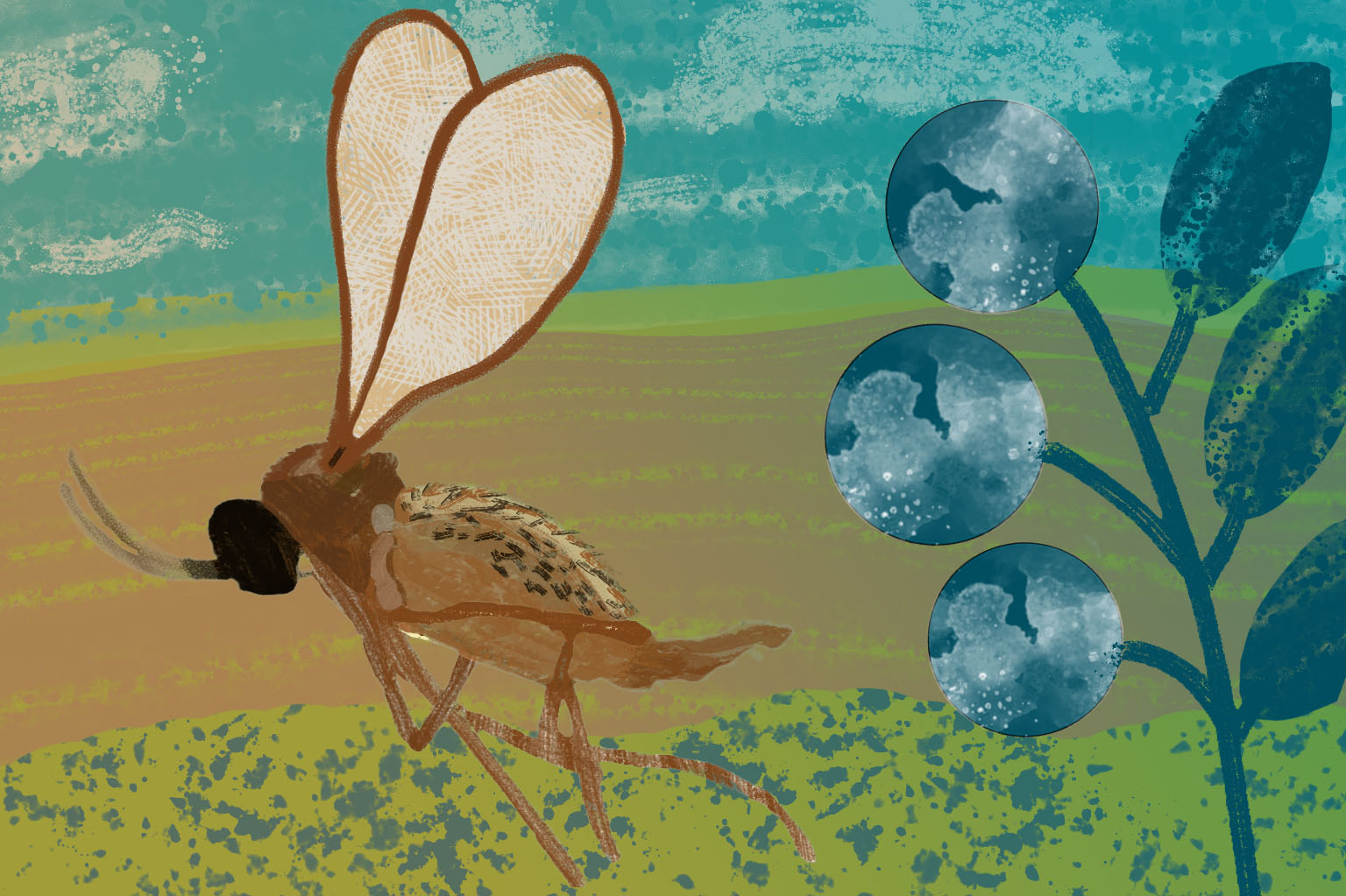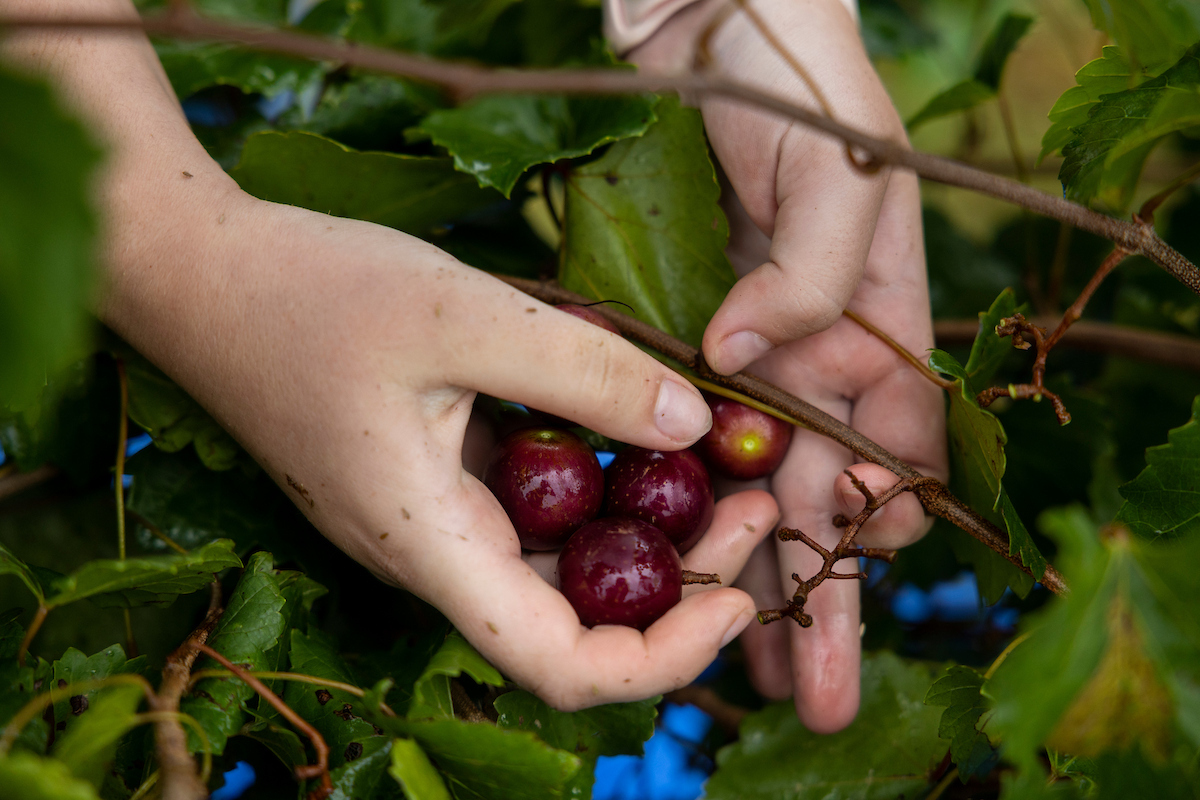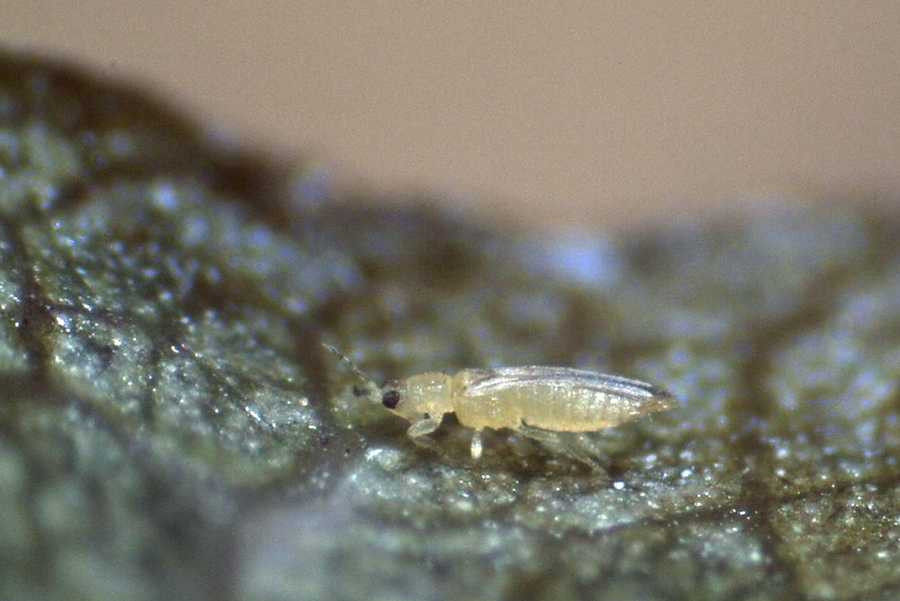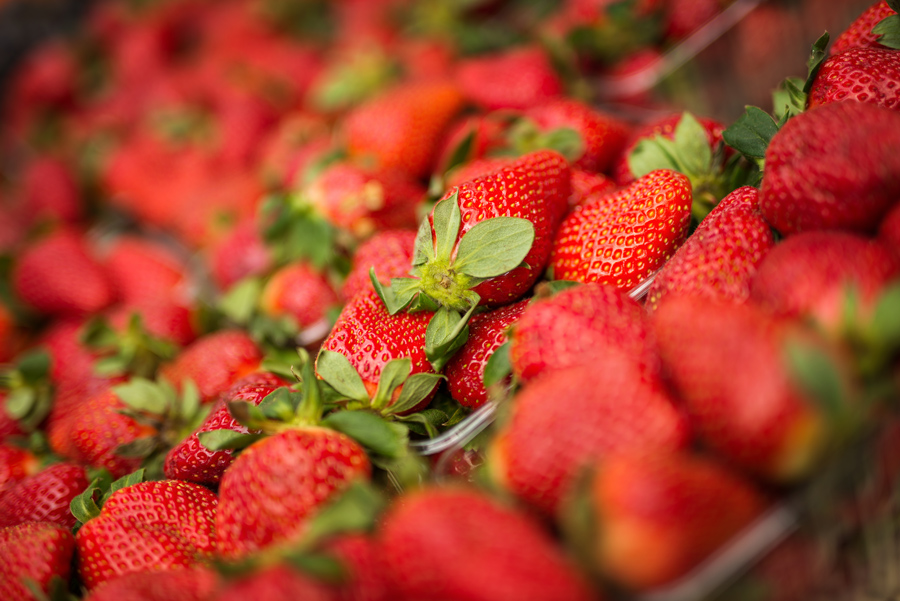Commercial Fruit
-

Blueberry gall midge, a small fly native to North America, has emerged as one of the serious pests of blueberries in Georgia. Severe gall midge infestations can cause up to 80% crop loss without proper intervention. Bud sampling to monitor for larvae is the only way to confirm its presence. Insecticide sprays need to be timed to target adult midges before they have a chance to lay eggs.
Craig R Roubos and Ashfaq A. Sial
|
-

Plant disease losses in 2023, including control costs, amounted to an estimated $715.43 million. The value of the crops used in this estimate was approximately $6863.22 million, resulting in a 10.42% relative disease loss across all crops included in this summary. The estimated values for most crops used to compute these disease losses are summarized in the UGA Center for Agribusiness & Economic Development 2023 Georgia Farm Gate Value Report (AR-25-01). Some estimates for fruits, ornamentals, and turf rely on Extension specialists’ knowledge of the industry and industry sources for information. Because of the retirement of the Extension specialist for ornamental and commercial landscapes, disease losses for this category could not be included in the report.
Ruchika Kashyap, Phillip M. Brannen, Timothy Branner Brenneman, Bhabesh Dutta, Ganpati Jagdale, Robert C Kemerait Jr, Alfredo Martinez, Jonathan E. Oliver, and Laxmi Pandey
|
-

This resource will guide vineyard managers through tissue sampling to determine grapevine nutrition, which is the most reliable way to obtain information to guide fertilization decisions. We cover techniques and considerations to help make sure that vineyards can collect the material efficiently and effectively.
Bijaya Ghimire and Sarah Lowder
|
-

Chilli thrips is an invasive thrips species in the United States. Chilli thrips infest more than 150 crops worldwide, including strawberries, cotton, tea, citrus, and peppers, as well as many ornamental plants. The pest has become increasingly problematic in nurseries because of its wide host range, small size, and rapid reproduction and development. In Georgia, chilli thrips were first reported in 2007.
William G. Hudson, Shimat V. Joseph, and Alejandra Monterrosa
|
-

This publication reports on a strawberry variety trial to help commercial producers choose a variety or varieties best suited to the South Georgia climate while maximizing quality and yield. Based upon the field portion of this study, the highest yielding varieties also had the best storage life: ‘Camino Real’, ‘Strawberry Festival’, and ‘Camarosa’. Fruits were assessed on a variety of parameters, described in detail below.
Joshua Dawson, Angelos Deltsidis, Ramsey Corn, Erick Smith, and Camille McAvoy
|
-

This integrated pest management (IPM) guide for blackberry and raspberry production includes management of diseases, insects, and weeds through IPM principles. Topics include pesticide stewardship and safety, insect and disease control, pre-transplant and transplant operations, fungicides and insecticide efficacy comparisons, and spray schedules, weed management, wildlife damage, and more. Recommendations are based on information from the manufacturer’s label and performance data from research and Extension field tests. Specific rates and application methods are on the pesticide label, and these are subject to change at any time. Published in cooperation with the Southern Region Small Fruit Consortium.
Phillip M. Brannen and Jonathan E. Oliver
|
-

Transplanting is the process in which seedlings are transferred from a specific place where they were sown to the soil where they will develop and produce. This process is an extremely important step in fruit and vegetable production as it helps with the initial establishment of the crop. Mechanical transplanters have emerged as important agricultural machines for farmers, and are designed to automate and optimize the transplanting process.
Luan Oliveira, Ted McAvoy, Regimar Garcia dos Santos, and Marcelo Barbosa
|
-

The 2025 edition of this publication covers integrated pest management information for blueberry producers in the Southeastern U.S. Recommendations are based on information from the manufacturer’s label and performance data from research and Extension field tests. This publication is intended for use only as a guide. Specific rates and application methods are on the pesticide label, and these are subject to change at any time.
Phillip M. Brannen and Ashfaq A. Sial
|
-

This 2025 update to the regional integrated pest management guide provides recommendations for muscadine grape production in the Southeastern U.S. Recommendations are based on information from the manufacturer’s label and performance data from research and Extension field tests. This publication is intended for use only as a guide. Specific rates and application methods are on the pesticide label, and these are subject to change at any time.
Phillip M. Brannen, Ashfaq A. Sial, Brett R Blaauw, and Sarah Lowder
|